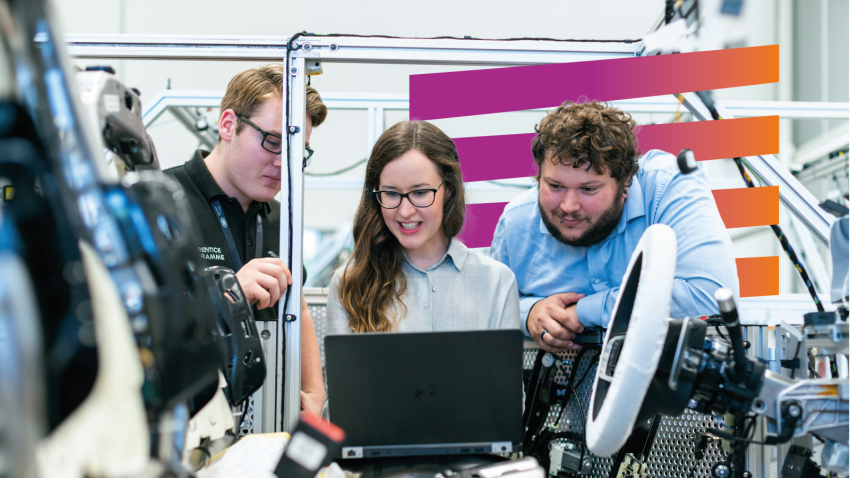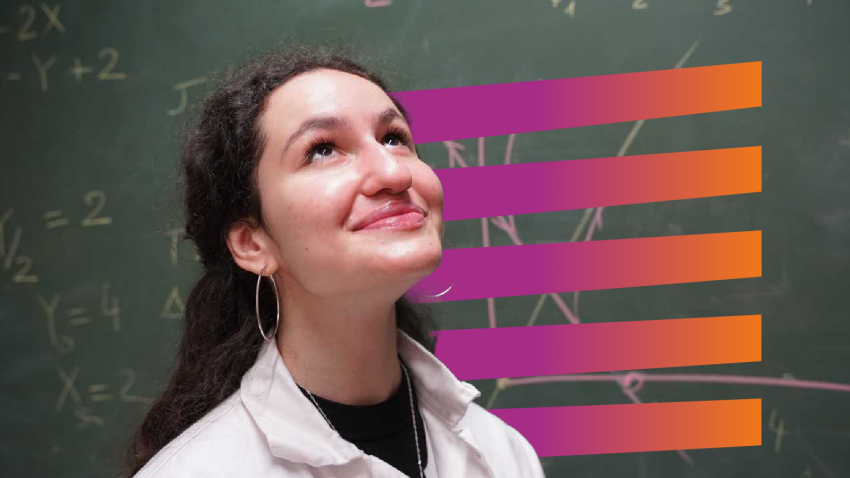What is STEM?
STEM is an umbrella term that groups:
- Science
- Technology
- Engineering
- Mathematics
STEM education promotes the development of foundational competencies and transversal skills such as problem-solving, critical thinking, and collaborative skills, laying the groundwork for innovative education in the subjects above.
Why are we focusing on it?
The European Union is facing a significant challenge in meeting the demand for skilled talent in STEM fields. These are crucial for growing, strategic sectors like clean and circular technologies, digital technologies, aerospace, and defence.
There aren’t enough qualified professionals to meet the market demand: nearly 80% of small and medium-sized enterprises in the EU struggle to find workers with STEM skills relevant to information and communication technology (ICT), artificial intelligence (AI) and quantum computing.
This shortage affects all sectors, including transport, food, and energy, and hinders economic growth and innovation.
A decline in basic maths and science skills among 15-year-olds is also a worrying trend. This is linked, among other factors, to a lack of specialist teachers, emphasising the need to attract and support educators through continuous professional development.
That is why the European Commission adopted the Union of Skills, a plan to improve high quality education, training, and lifelong learning with a common vision of competitiveness.
A strategic plan on STEM education
The STEM Education Strategic Plan is a key initiative of the Union of Skills. The plan sets out measures to reverse the trend of declining performance in STEM skills at school, and encourage more students, especially girls and women, into STEM studies and careers.
3 key objectives
EU-level STEM targets for 2030:
- 45% of students enrolled in STEM fields in initial medium-level vocational education and training (VET), where 1 out of every 4 students is female
- 32% of students enrolled in STEM fields at tertiary level, where 2 out of every 5 students are female
- 5% of students enrolled in ICT PhD programmes, where 1 out of every 3 students is female
Set up a European STEM Executive Panel that will
- bring together high-level representatives from business, political or administrative sectors to advise decision makers on strategic issues such as curriculum modernisation
- ensure that educational contents reflect business needs and job market realities
Improve STEM skills intelligence by
- measuring graduate outcomes
- collecting strategic data to better anticipate sector-specific skill needs
- Develop a STEM competence framework to help students, educators and employers clearly understand what competences STEM sectors need and take the necessary steps to develop those competences and skills.
- Work towards a European degree for Engineers, to provide high quality and relevant education to the future generations of students who wish to embark on engineering careers.
- Open STEM education centres that will help schools by offering innovative class activities, in cooperation with businesses, science museums, libraries, cultural associations, universities and research institutions
- Launch Girls go STEM to attract more girls to STEM subjects, by training 1 million girls and women by 2028 through different European initiatives to develop their technical and entrepreneurial skills in STEM domains.
- Launch STEM Futures to inspire students through STEM education success stories (for example, involving girls and women in STEM and organising a European STEM Week).
- Pilot a STEM Specialists Fellowship to attract top international STEM experts to EU higher education and research institutions.
Next steps
The implementation of the STEM Education Strategic Plan starts in 2025, through policy coordination of reforms and investments, based on skills intelligence.
Coordination among EU countries will be strengthened through additional focus on STEM in the context of the European Semester (the annual exercise that coordinates the EU's economic and social policies).
Publications
Funding opportunities
As of 2026 funding will be made available through the various EU-funded programmes and initiatives such as Erasmus+.





